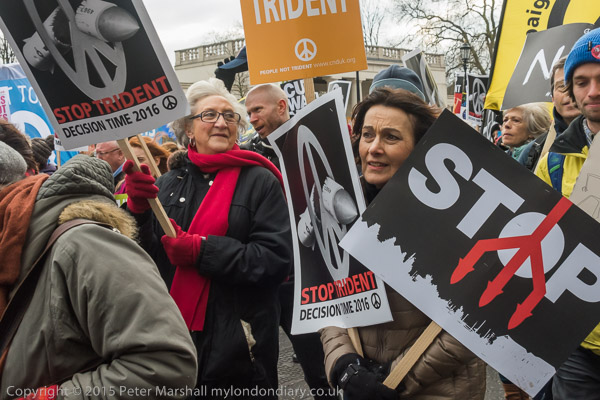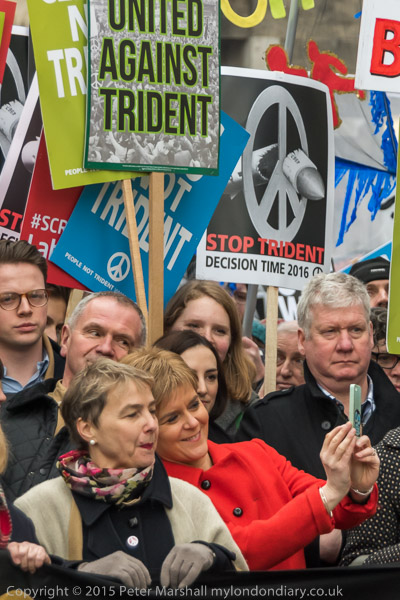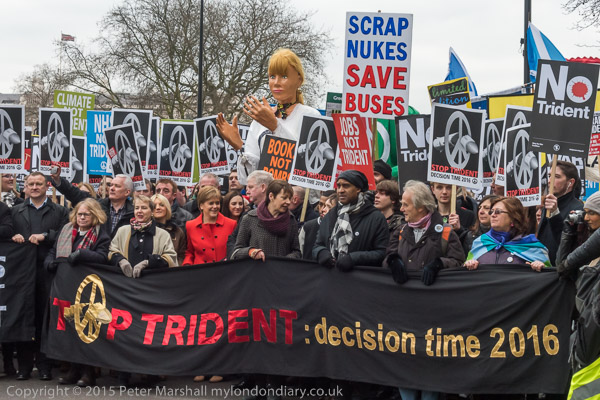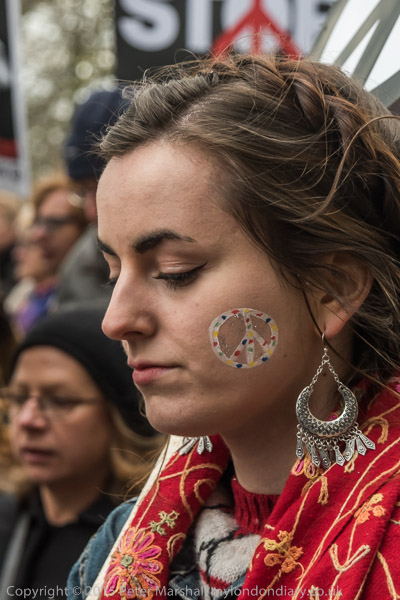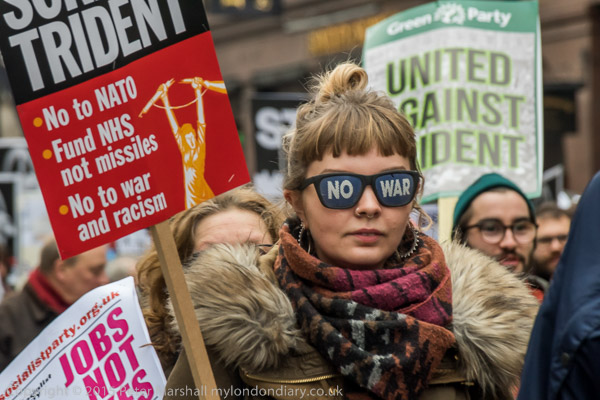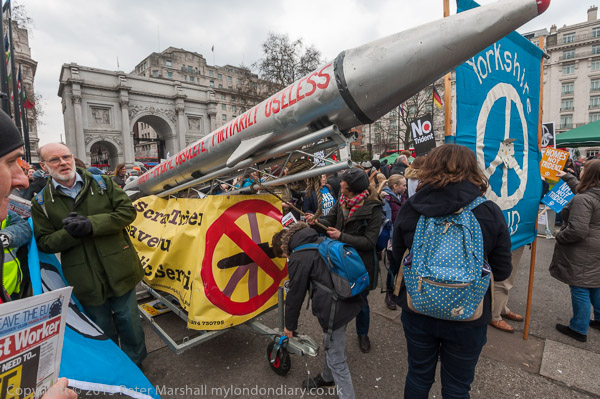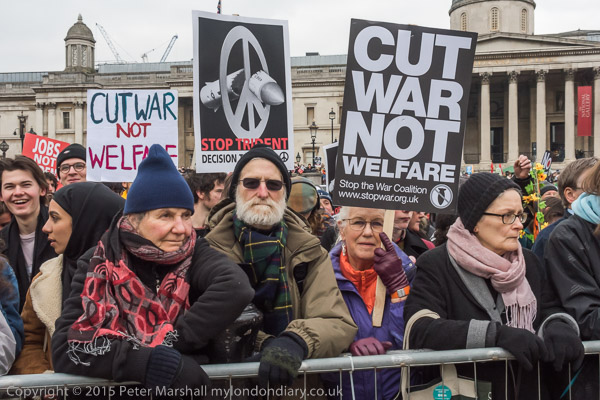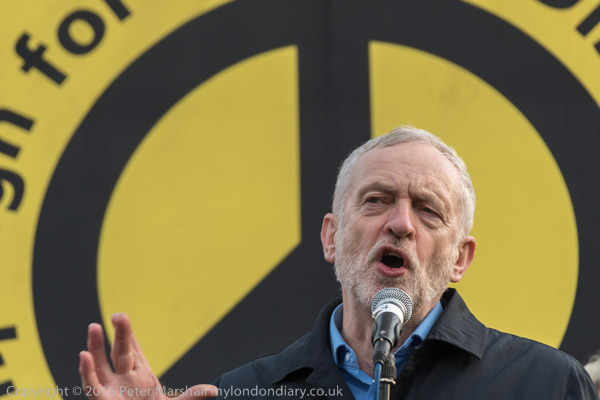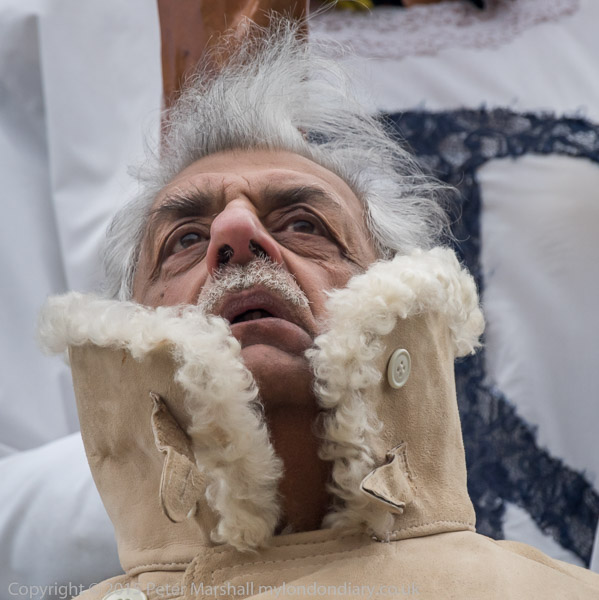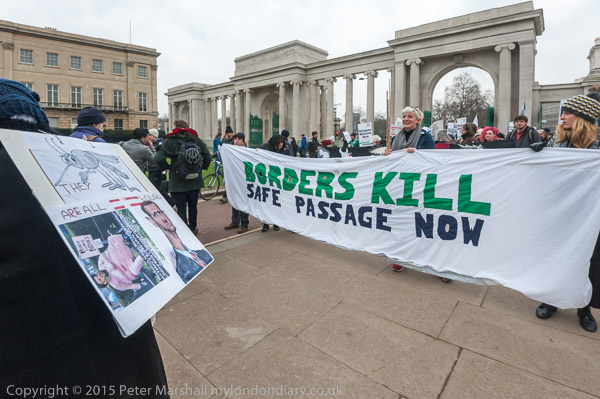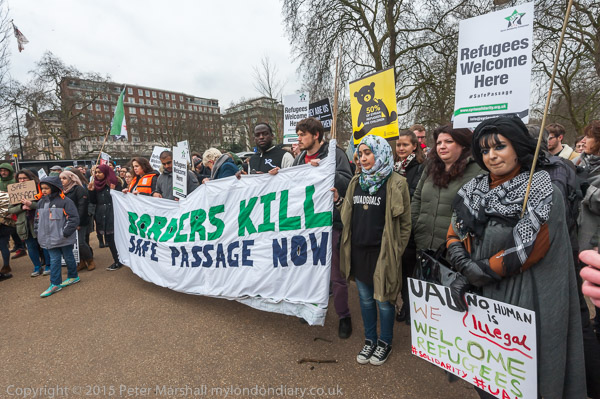London Saturday 16th July 2005: Another long series of posts from a day in London 20 years ago which I think is worth rescuing from the depths of My London Diary. Here, with the usual corrections and links to the many pictures on My London Diary is my day.
SWFest 05 – Pimlico
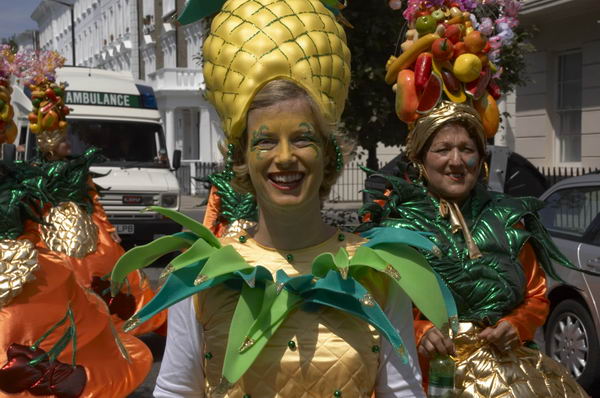
Back in London [from a visit to East Yorkshire], Saturday 16 July was a busy day. I started in Pimlico, with the ‘SWFest 05’ parade and festival In St Georges Square. It was a local event, with plenty of local people enjoying themselves.
International Brigade Commemoration – Jubilee Gardens, South Bank
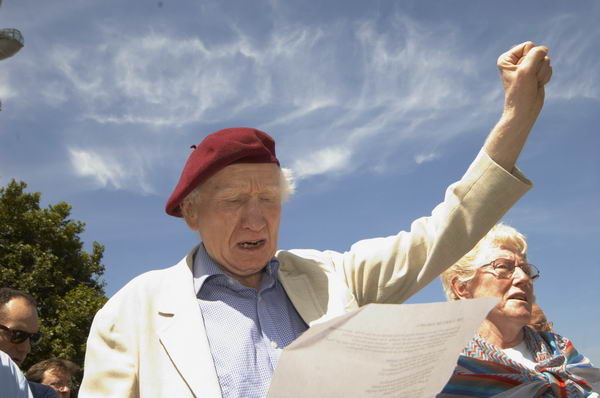
Getting from there to Jubilee Gardens for the annual commemoration of the International Brigade who fought fascism in Spain was made tricky with the obvious bus route being held up by a parade. I got a little exercise jogging there, but it was really too hot.
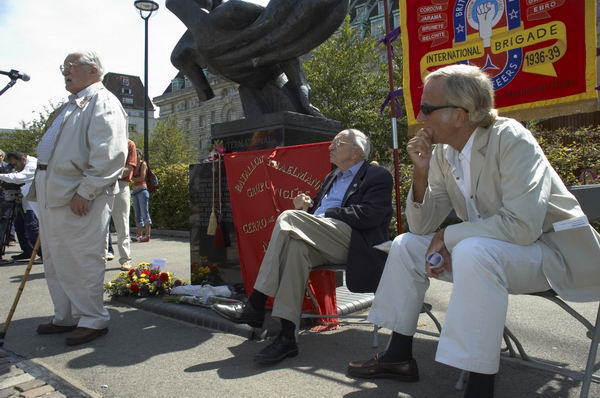
The weather was indeed rather Spanish, hot and breezeless, with a clear blue sky. There was no shade around the memorial to those 2,100 who fought 67 or more years ago for freedom. Many died in Spain, and there are now relatively few still living, though some were there, now in their 80s and 90s, and some clearly still going strong.
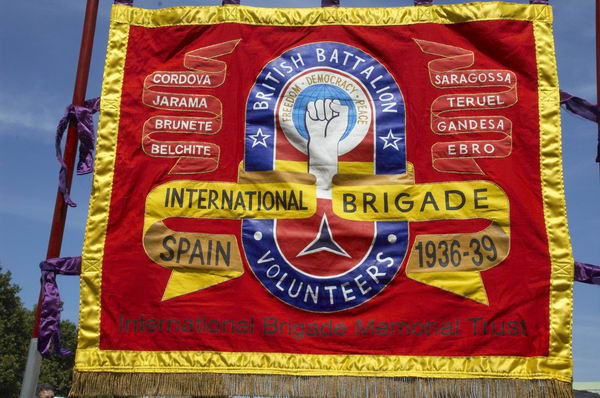
Sam Russell spoke movingly of the events in Spain and Jack Jones chaired the meeting. It fell to him to read out the names of the comrades who had died since last year’s event. Several came in their red berets, and with their badges
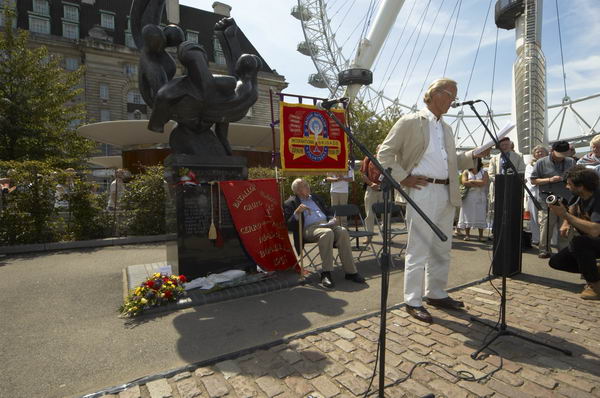
John Pilger had been invited to speak about the meaning of the Brigaders’ heroism today. [His account of the event and his speech I linked to on Truthout is no longer available, but is many other articles are worth reading, including Chomsky’s Remembering Fascism: Learning From the Past which begins with a mention of Spain.]
The commemoration ended with singing:
“So comrades, come rally and the last fight let us face – The Internationale unites the human race.”
Unfortunately there still seems to be an ever longer road before that happens.
National Front demonstrate – Victoria
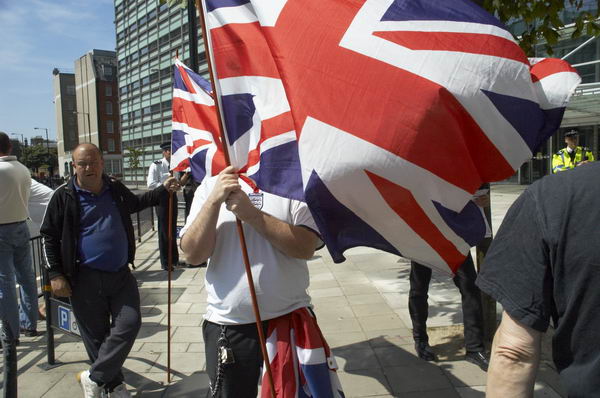
Fascism is still with us, and showed its face – if largely shamefacedly – in London later that afternoon, when around 50-60 National Front supporters gathered to march. It wasn’t quite clear what message they wanted to put across, there were few banners and less articulacy in a flood of union jacks.

Most of the marchers were men. I talked to quite a few, asking permission to take some of the pictures. No-one refused, some said yes, then turned away or moved behind their flags. At one point I was threatened with violence, but the guy’s mates came and pulled him away. One of the women demonstrators had a bunch of flowers. I asked her about them and was told the march would leave these at the Book of Condolence for the London Bombings.

The police let them walk to the corner of Victoria Street, where they could be seen by the public walking by. Many of those passing were clearly hostile to the Front, most showing it by their expressions, a few shouting at them.

I took a few more pictures and then left. Another photographer there was commissioned to cover the march, but I was free to do something more pleasant on this fine summer’s day. I went and sat in the park and ate my sandwiches and had a drink.
more pictures
Turkish Festival, Coin St – Bernie Spain Gardens
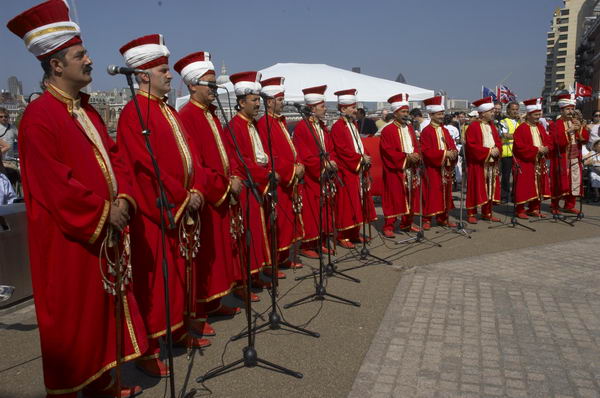
Meanwhile, at Bernie Spain Gardens, another of the programme of Coin Street events celebrating London’s diversity was taking place. I arrived just as a procession of Turkish singers and musicians was making its way to perform on the south bank walkway there.
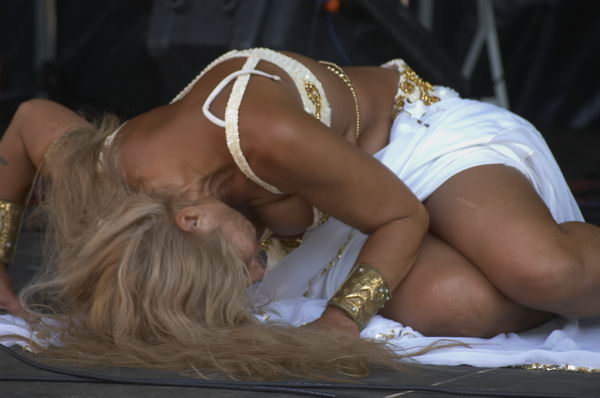
Later I went to hear one of Turkey’s leading singers perform on the main stage, and she was followed in the limelight by a belly dancer. I’ve photographed several belly dancers over the years, and this one had rather less belly than some, but that made the performance none the less compelling. I can’t claim to understand the finer points of the genre, but it still has a certain attraction. It isn’t just me being mesmerised by the mobility of a female body, although that certainly doesn’t detract.
Divided Cyprus – Greek Cypriots protest in Trafalgar Square
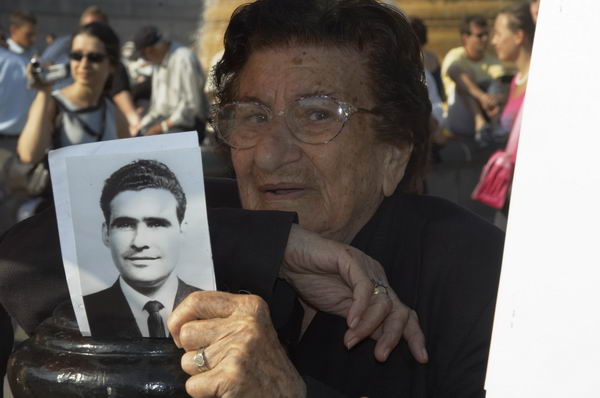
Dragging myself away from Turks and Turkish London and a rather pleasant Turkish beer – on sale here at over 5 times its price in Turkey – I walked past the skateboarders and over the bridge towards Trafalgar Square. Supposedly there was to be a march of Greek Cypriots protesting against the ‘foreign’ Turkish occupation of the north-east third of Cyprus, continuing since the 1974 invasion.

The march didn’t seem to be happening, but there was a rally in Trafalgar Square, and I photographed a number of people holding photographs of some of the 1476 people – soldiers and civilians – still missing since 1974.
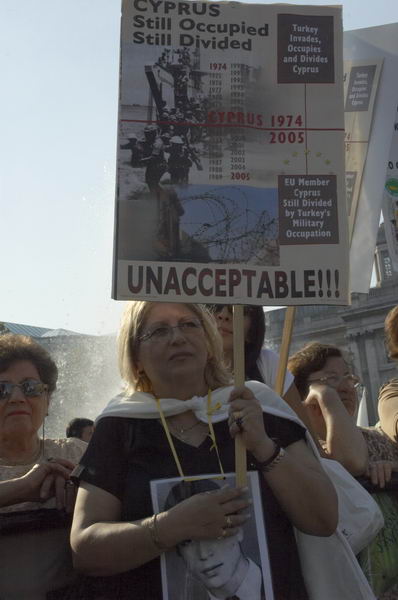
Despite these outstanding problems, Greek and Turkish Cypriots live together peacefully in London, particularly along Green Lanes [in Harringay in North London.] The Cypriots (especially now Cyprus is in the European Union) claim to “long for a viable and durable settlement that would enable Greek and Turkish Cypriots to live amicably as they have for centuries in the past“.
Flickr – Facebook – My London Diary – Hull Photos – Lea Valley – Paris
London’s Industrial Heritage – London Photos
All photographs on this page are copyright © Peter Marshall.
Contact me to buy prints or licence to reproduce.
